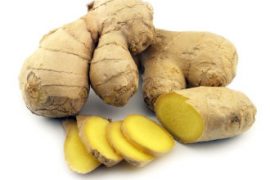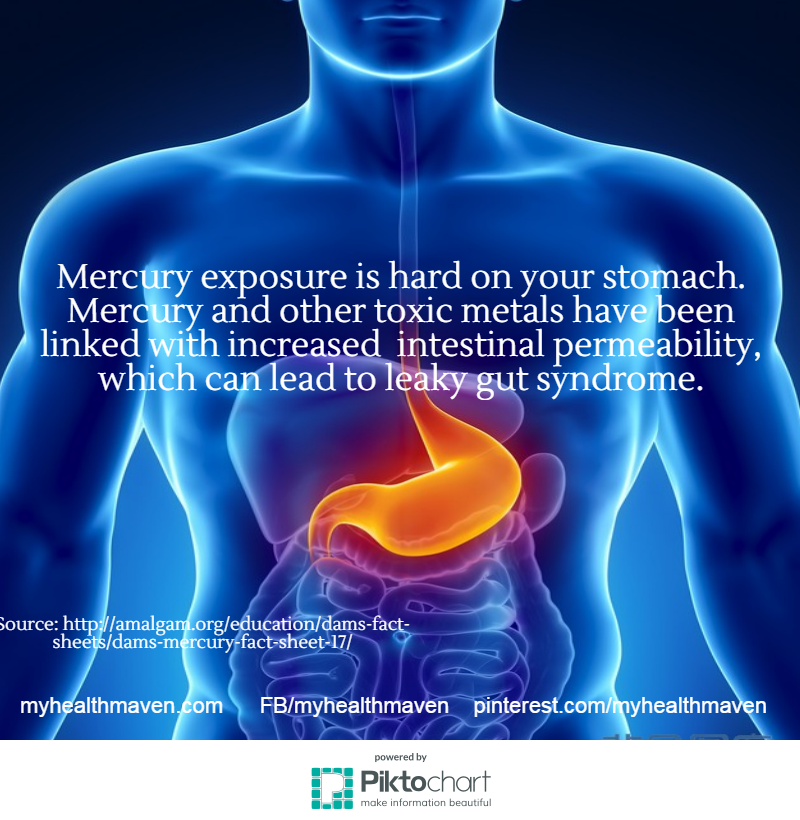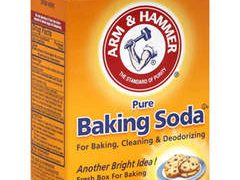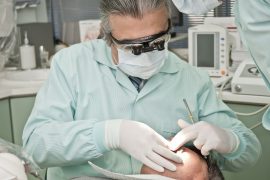Some enjoy essential oils aromatically by diffusing them into the air, while others combine them with Epsom salts for a therapeutic bath. Evidence continues to emerge suggesting essential oils can play a beneficial role during menopause. This is certainly a topic relevant to many of my readers and may be worthy of consideration.
Menopause and Hormone Replacement Therapy
Although you may think of menopause as a season of life, it is medically defined as marking the cessation of a woman’s menstrual period for 12 months. Menopause signals that your ovaries are producing less estrogen and you no longer have the ability to become pregnant. While some arrive at this stage earlier or later, the typical range for menopause is 45 to 55 years of age.
The average age is 51, but most women experience this “change of life” at an age similar to that of their mothers.1 Previously, women going through menopause had limited options for managing the wide range of signs and symptoms that accompany it. One of the primary treatments ” hormone replacement therapy (HRT) ” has been linked to some forms of cancer.
The Women’s Health Initiative (WHI), which involved a landmark study of 160,000 postmenopausal women, showed that hormone therapy involving estrogen and progestin may not be suitable for all women. In fact, for women who had not had a hysterectomy, HRT dramatically increased their risk of breast cancer, dementia and strokes.
Signs and Symptoms of Menopause
If you have already reached menopause, you are likely familiar with many of the common signs and symptoms that accompany it.2,3,4 Keep in mind some of the following concerns may also arise during perimenopause, the transitional phase leading up to menopause, which may last as long as 8 to 10 years.
| “ Bone loss and brittle bones |
“ Libido impacts, particularly a decreased interest in sex |
“ Sleep changes, including insomnia |
| “ Hair changes, including texture or thickness, or increased body or facial hair |
“ Mood changes, including anxiety, depression and irritability |
“ Vaginal dryness and pain during intercourse |
| “ Hot flashes |
“ Muscle loss |
“ Voice changes |
| “ Irregular periods during perimenopause |
“ Night sweats |
“ Weight gain, particularly around the waist |
Beyond HRT, doctors will often propose treatment or medications to target specific symptoms that arise before and during menopause. Rather than attempting to treat a collection of individual symptoms, I recommend you devise a treatment plan that addresses menopause as a whole not bone loss, hot flashes or the like individually.
Fortunately, though I am told menopause symptoms can be annoying, with proper treatment, they generally should not diminish your overall quality of life. That said, some women may experience horrifically debilitating symptoms before and during menopause. If that is you, please consult a physician before undertaking any form of treatment, especially prior to experimenting with alternative remedies.
Conventional Treatments Versus Essential Oils
If you are among the growing segment of women who feel uncomfortable with the idea of using conventional HRT to treat menopause or perimenopause symptoms, especially given the outcome of the WHI studies, you may want to consider essential oils. While more studies are necessary to validate their efficacy, essential oils may be useful to help you manage certain menopause-related symptoms.
Obviously, each woman’s body is unique and will respond differently to any form of treatment, including oils. For optimal results, I recommend you work with your doctor and other holistic health practitioners to find the remedies that will best address your concerns. With proper medical supervision, essential oils may be the missing ingredient your body wants and needs.
Essential oils could provide you with the “best of both worlds” by helping to relieve some, or all, of the nagging and bothersome symptoms of menopause, thereby avoiding potentially harmful, conventional treatments. For certain, the risks of adverse outcomes are significantly reduced when using natural substances like essential oils.
Essential Oils Believed to Have Positive Effects on Menopause
Below are some of the essential oils believed to have the ability to ameliorate menopause symptoms.5,6,7 As you begin to work with these oils, I advise you begin with a small dose of an individual oil and proceed cautiously to higher doses and additional oils. Ideally, work with a qualified medical professional or essential oils practitioner who has experience with hormone balancing.
| “ Clary Sage: Known to alleviate PMS pain, relieve hot flashes, soothe stressful feelings and improve hormone balance |
| “ Geranium: Has been shown to help balance hormones and improve mood, as well as promote menstrual cycle regularity during perimenopause; also thought to have anti-anxiety and antidepressant effects |
| “ Lavender: Long known to promote relaxation and sleep; now thought to aid in balancing hormones, easing cramps, soothing stress and alleviating menopause-related headaches, heart palpitations and hot flashes |
| “ Pine: Believed to help reduce bone loss and protect against osteoporosis |
| “ Rose: Proposed as a strengthener of the uterus, which may result in improved mood and a reduction in hot flashes |
| “ Vitex agnus-castus: Also known as chasteberry and Abraham’s balm; long professed to help with irregular menstrual periods and mood swings |
You may want to use these oils aromatically by diffusing them into the air, which will enable you to realize their many benefits without the potential safety risks of applying them topically or internally. Essential oil diffusers are readily available online or from your local natural health store. It has been shown that combining three to four drops of clary sage and an equal amount of lavender in a diffuser is a wonderful way to relieve PMS symptoms.8
Many women find it beneficial to incorporate essential oils into massage, which can be timed to support your body’s needs around your menstrual cycle. When using them for massage, it’s best to dilute essential oils into a carrier oil such as coconut oil or jojoba oil.
While peppermint oil is not specifically recommended for menopause, it has been shown to have a positive effect on headaches.9 If you suffer from headaches during your monthly cycle, you can apply peppermint oil directly to your forehead by hand or with a roll-on applicator.
Essential Oil Blends That Help Soothe PMS
Wellness Mama shares several recipes for essential oil blends designed to promote a sense of well-being around your monthly menstrual cycle by adding them to a soaking bath or massage oil.10
- PMS Bath Blend: Mix 3 drops of clary sage, 2 drops of chamomile, 2 drops of geranium and 2 drops of lavender essential oils into 1/4 cup (85 grams) Epsom salt (magnesium sulfate) before adding to the bath; soak in the water for as long as you desire
- PMS Hormonal Balance Blend: Mix 2 drops of clary sage, 1 drop of geranium and 1 drop of ylang ylang essential oil into 1/4 cup of Epsom salt; soak in the water for as long as you desire
- Menstrual Massage Blend: Mix 6 drops of lavender, 3 drops of clary sage and 3 drops of rose essential oil into 4 teaspoons of a carrier oil like coconut or jojoba oil. Use this blend as a massage oil to rub on your abdomen, back or all over your body
Risks and Cautions Related to Using Essential Oils
It almost goes without saying that simply because essential oils are natural, does not mean they’re safe for you in every instance. Formulations, dosing and quality vary widely. Avoid taking essential oils orally, even if you’re convinced they’re high-quality. Essential oils are exceptionally potent and may cause mouth, esophagus or stomach irritation. Other more serious consequences may also occur.
Some oils can irritate your skin, even in small doses. For that reason, it’s best to treat essential oils like any other medication by taking the following precautions:11,12
- Adhere to the dilution instructions provided by the manufacturer and avoid using more than the recommended dose
- Contact your local poison control center if you accidentally use too much or believe you are having a negative reaction to an oil
- Perform a patch test on a small area of your skin prior to using essential oils for massage and other applications
- Introduce only one essential oil at a time until you know which ones your body can handle, otherwise, if you have an allergic reaction, it will be difficult to determine which oil caused it
- If you already know you are allergic to the plant from which an essential oil is derived, it is safe to assume you may also be allergic to the oil; therefore, you should avoid it
If you are pregnant or nursing, be sure to consult your doctor or essential oils practitioner prior to using oils. Some essential oils have been known to cause cramping and uterine contractions during pregnancy.13
Other Ways to Naturally Balance Your Health and Hormones
As I have often suggested, whether you realize it or not, your lifestyle choices have a tremendous impact on your overall sense of health and vitality. What you eat, how much you exercise and the quality of your sleep will have an effect, positive or negative, on your hormones. Besides using essential oils, women who wish to avoid HRT may also want to consider the following lifestyle remedies:14,15,16
| “ Adopt stress-management techniques such as controlled breathing, meditation, prayer and yoga |
| “ Avoid processed foods, which often contain chemicals and toxic additives that may interfere with your body’s ability to regulate hormones |
| “ Eat a healthy, balanced diet centered on whole foods, including organic vegetables and fruits, grass fed dairy and meat and high-quality healthy fats |
| “ Get regular exercise and make sure your program includes a variety of activities, such as core training, high-intensity cardio, peak fitness, stretching and weight training; avoid prolonged periods of sitting and remain upright and active as much as possible during non-exercise hours |
| “ Limit your caffeine and sugar intake |
| “ Maintain a healthy weight |
| “ Quit smoking |
| “ Reduce your intake of processed vegetable oils, some of which are genetically engineered, and balance your intake of omega-3 and omega-6 fats |
| “ Sleep according to your body’s age-related sleep needs |
As mentioned above, it is vital you consume plenty of high-quality, unprocessed fats as part of your daily eating program. To learn more about this, please see my latest book “Fat for Fuel.” I would also emphasize the importance of optimizing your vitamin D levels.
Omega-3 Fats Are Vital to Women’s Health
As mentioned above, omega-3 fats are an important part of the equation if you want to naturally balance your hormones. A study published in the Obstetrical & Gynecological Survey17 underscores the importance of omega-3 fats to women’s health. Some of the potential benefits of omega-3s researchers cited include:
- Facilitate chances of pregnancy in infertile women
- Lower the risk of premature birth
- Increase the length of pregnancy and baby’s birth weight
- Support the development of the baby’s brain
- Help stabilize triglyceride levels, which often increase during hormone therapy
The study authors also noted:18
“There is also some evidence that supplementation with omega-3 fatty acids might help to prevent preeclampsia, postpartum depression, menopausal problems, postmenopausal osteoporosis and breast cancer.”
I have spoken often about the importance of choosing a high-quality, animal source for your omega-3 fats, such as anchovies, sardines or wild-caught Alaskan salmon. If those are not options for you, you might consider supplementing with a high-quality fish oil supplement or krill oil, which is my personal favorite.
The Benefits of Bioidentical Hormones
To avoid leaving you with the impression that all hormone therapy is bad, it’s important to note that many women have found relief from menopause and perimenopause symptoms through bioidentical hormones. Because bioidentical hormones are readily available through a compounding pharmacist (a doctor’s prescription is required), I recommend avoiding all synthetic and animal estrogens for hormone replacement.
Three types of estrogens are commonly used in bioidentical HRT: estradiol, estriol and estrone. A commonly prescribed formulation known as Tri-est includes 80 percent estriol with 10 percent each of estradiol and estrone. Estriol is considered the safest of the three and is the most commonly prescribed. It has been used safely for decades, and I believe it’s particularly useful if you’ve had a hysterectomy.
I also recommend using natural progesterone in lieu of synthetic progestins. There’s reason to believe synthetic progestins are responsible for many, if not most, of the detrimental side effects of hormone therapy.
Natural progesterone is made from a substance called diosgenin, which is commonly extracted from wild yams or soybeans. Even though it may be extracted from soy, it is a highly purified hormone that contains absolutely no remnants of problematic soy substances. Whether you choose essential oils, diet and lifestyle changes or natural hormones ” or a combination of all three ” I hope you will recognize you have many healthy options available to support you before and during menopause.








